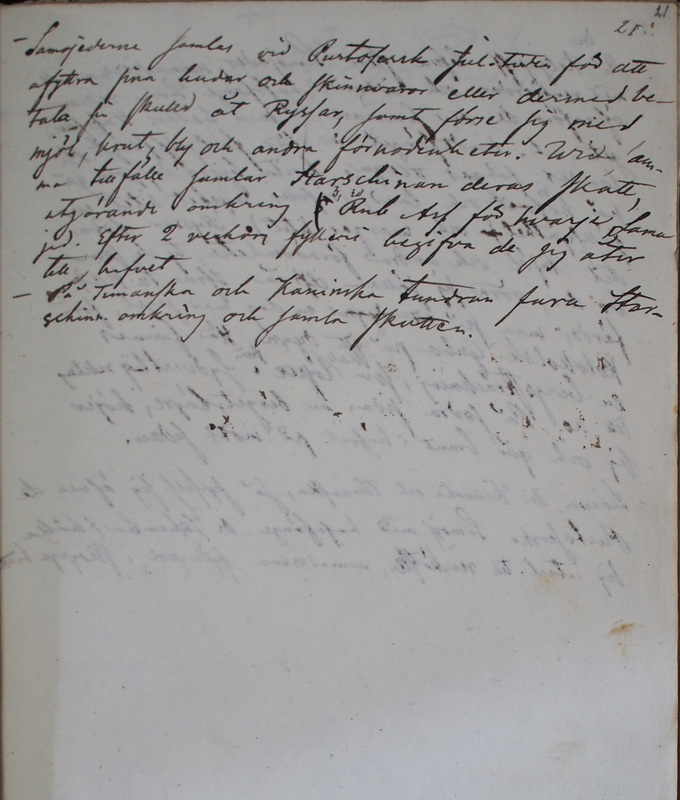Ethnographiska, historiska och statistiska anmärkningar. 021
Title
Ethnographiska, historiska och statistiska anmärkningar. 021
Description
|
Samojederne samlas vid Pustosersk Jul-tiden för att
afyttra sina hudar och skinvaror eller dermed be- tala sin skulld åt Ryssar, samt förse sig med mjöl, krut, bly och andra förnödenheter. Wid den- na tillfälle samlar starschinan
deras skatt,Ru staršina ʻchief’. The tribute paid in furs, yasak, was habitually collected by the head of the family, who disbursed them in the administrative centres. After the 1822/1835 reform (see [044. yasak]), this customary system became legally regulated. In Siberia, the chiefs were occasionally called princes, Ru knjažec, a practice dating back to before the Russian conquest. (Perevalova 2019; Lëzova 2000; Forsyth 1992: 28–47; Alekseev (ed.) 2010: 117–136)
utgörande omkring 3,30 Rub[el] Arf för hvarje Samo- jed. Efter 2 veckors fylleri begifva de sig åter till hafvet. |
During Christmastime the Samoyeds gather in Pustozersk in order to sell their hides and skins or to pay back their debts to the Russians, as well as to provide for themselves flour, gunpowder, lead, and other necessities.Their leader collects taxes on the same occasion, about 3.30 roubles for each Samoyed. After two weeks of drunkenness, they go back to the sea. |
|
På Timanska och Kaninska tundran fara star- |
In the Timan and Kanin tundras, the leader travels around to collect the tax. |

